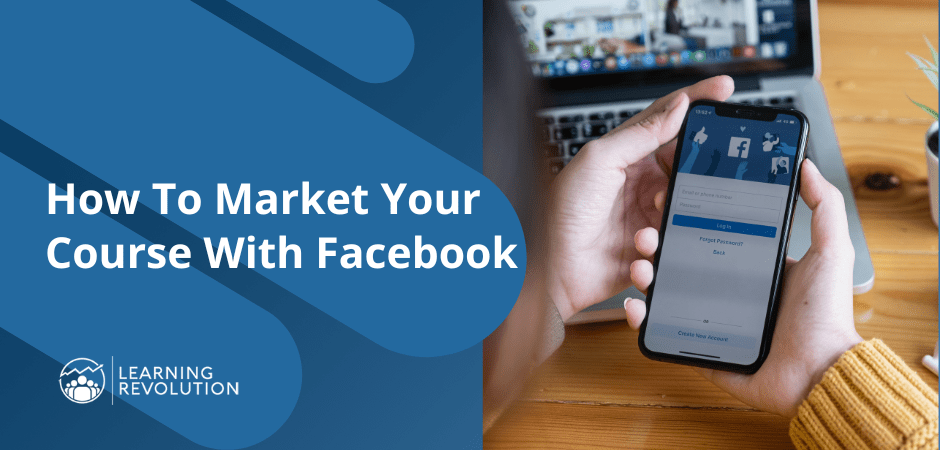

Learning how to create Facebook ads isn’t hard, but creating high-converting Facebook ads is another thing entirely. In this article, we’ll take a look at how you actually achieve improving Facebook ads conversions with an 8-step process.
To be specific, I’ll share a proven Facebook ads funnel you can use to drive traffic to your online sales page, generate qualified leads for your offer, and convince people to buy from you.
I’ll also cover the ideal starting budget for your ads, the different ad types you should use, and how to retarget the leads that bounce off your sales page.
One thing I won’t do is go very deep into the technical details of setting up a Facebook ad because you can find step-by-step ad configuration guidelines (like these) in Facebook’s help center.
Finally, while I’m mostly focused on using Facebook ads to sell online courses and high-ticket consulting and coaching offers, most of what I cover here applies to just about any digital product or service.
Sound good? Let’s dive in.
Do Facebook Ads Work – i.e., Why Use Them?
In spite of all its troubles in recent years, Facebook is still the world’s most popular social network with 2.9 billion monthly active users, according to the Digital 2022 Global Statshot Report.
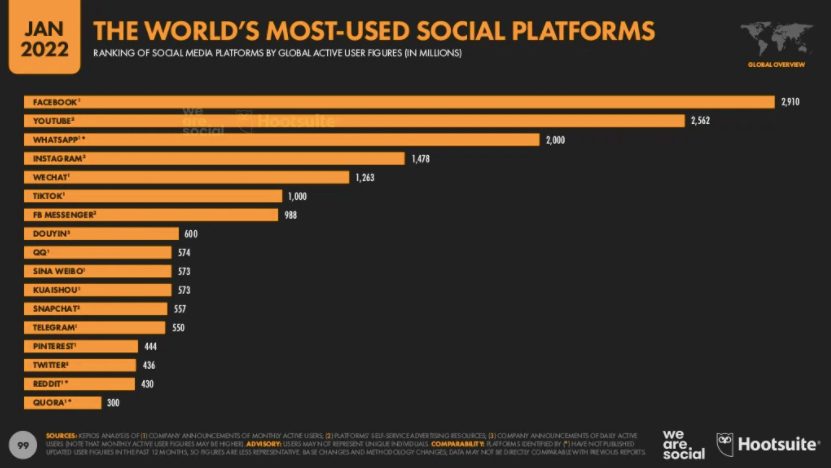

No matter what niche you focus on as an edupreneur or expertise-based business, your target audience is already using Facebook.
You can find them with Facebook’s advanced audience targeting features that allow you to display ads to your ideal customers and optimize your ad spending.
According to Wordstream, the average Facebook Ads conversion rate is 9.21% across all industries, much higher than Google Ads that convert at 4.4% across all sectors.
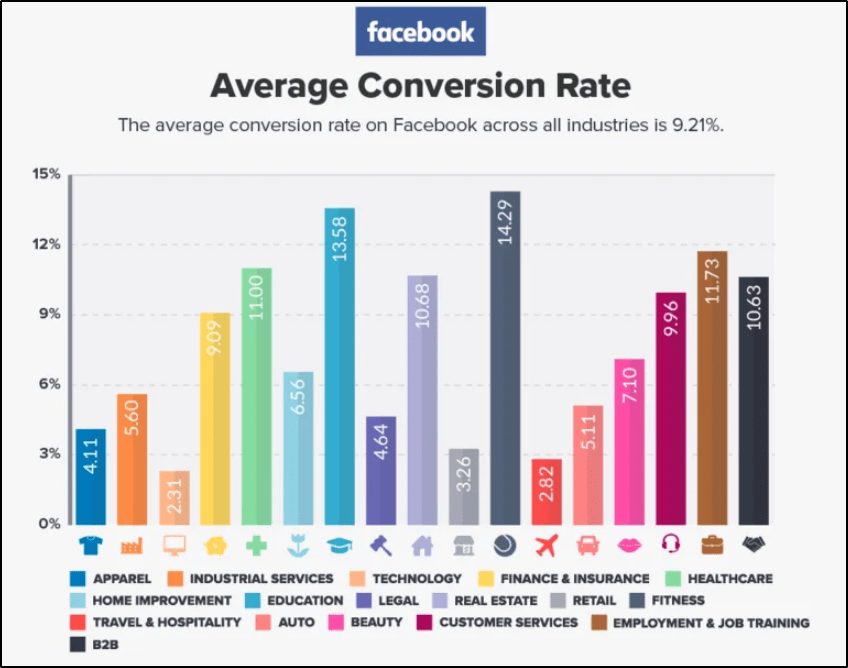

Even better, the Facebook ads conversion rate for the online education industry is 13.58%.
This is why some of the world’s most popular course creators, coaches, and consultants use Facebook ads to drive traffic to their online course marketing funnels.
So what are some high-converting Facebook ad examples? Here’s a lead generation ad to one of Amy Porterfield’s online courses.
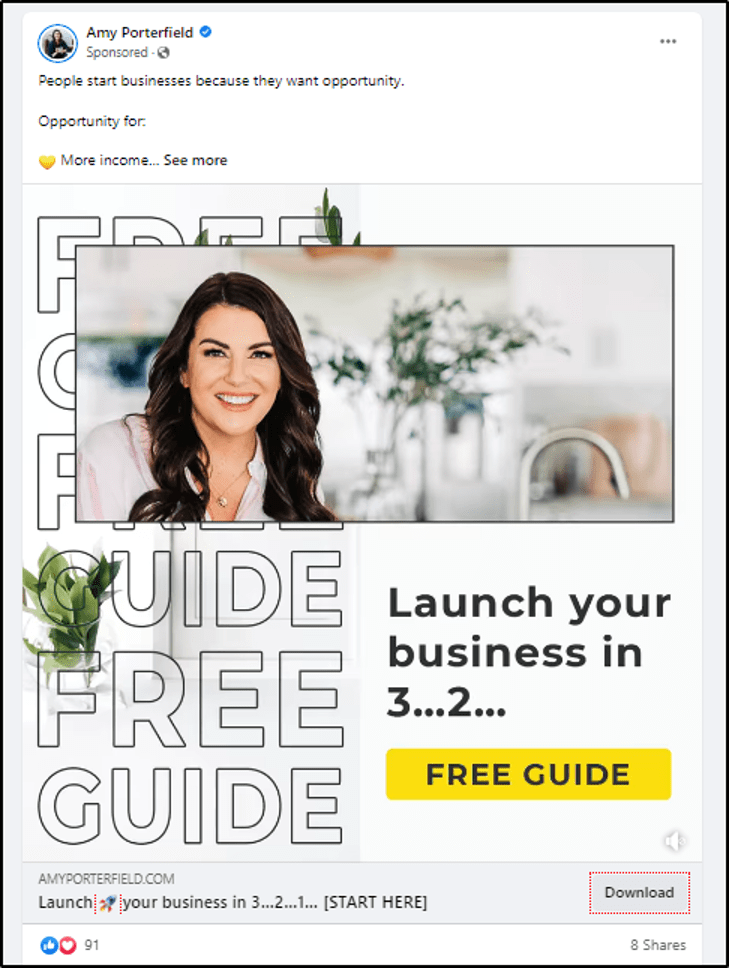

Here’s another high-converting Facebook ad example, this time for a free workshop by Ezra Firestone, a popular marketing professional.
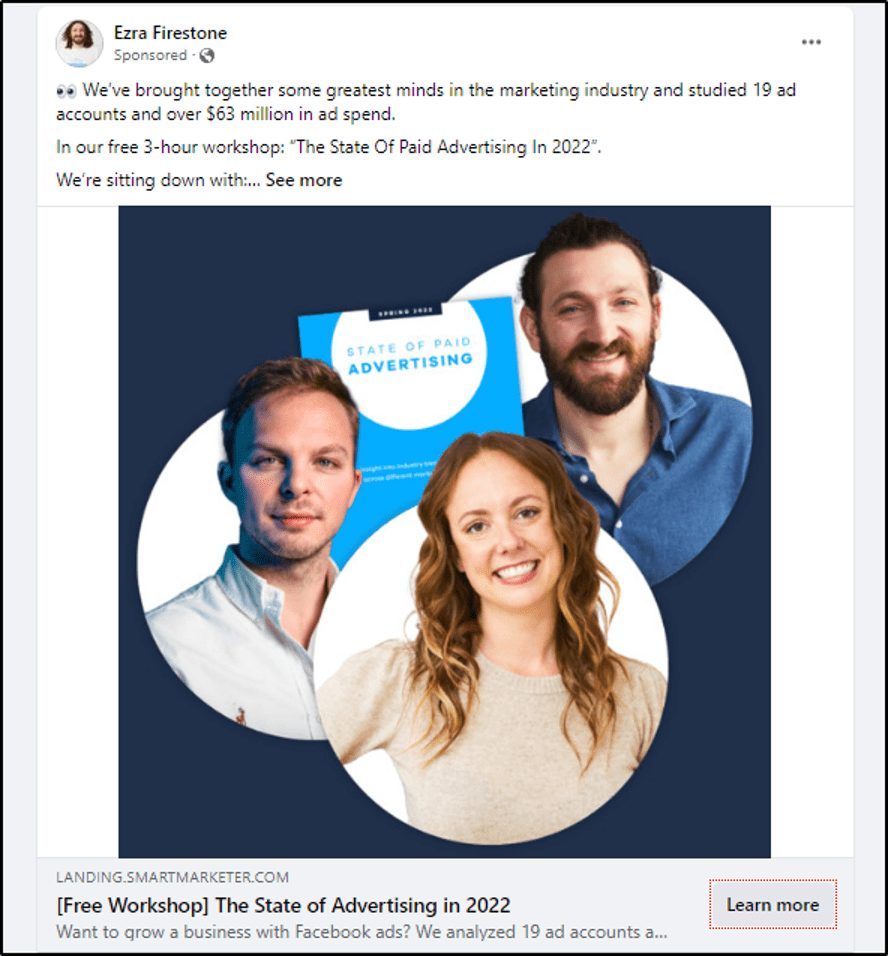

Like so many of the most effective Facebook ads, these lead to free resources and add the visitors to the marketing and retargeting funnel (we’ll talk about this later).
However, Facebook ads are not ideal for everyone.
Let me explain.
Who Gets Good Facebook Ads Conversion Rates?
Facebook ads have evolved over the years.
There’s much more competition, so FB ads are no longer a cheap and pocket-friendly advertising solution. In fact, a lot of people give up because they blow through a bunch of money only to see low Facebook ads conversion rates.
A detailed study of more than $300 million worth of Facebook ads by Adespresso found that the average cost per click across Facebook campaigns increased by nearly 100% from January 2021 to December 2021.
If you try selling your online course directly through Facebook ads, you’ll burn a lot of cash and shrink your profits, especially if your offering is priced under $500.
So, who should invest in Facebook ads for selling online courses and other expertise-based offerings? Here are some of the characteristics of the most effective Facebook Ads campaigns.
They Support Offerings with A Proven Sales History
If you’ve never sold your online course, coaching, or consulting program before, investing in Facebook ads isn’t the best option because it can end up costing you a lot.
Ideally, you should first validate your product through a beta launch and directly sell it to your subscriber base.
However, if you have a proven product that your email subscribers, website visitors, and social media users have bought before, Facebook ads are an excellent way to scale your sales.
They Have at least $3000 Per Month Budget
This one can be hard for people interested in Facebook ads to swallow, but the simple truth is that Facebook’s advertising algorithm optimizes campaigns over time. It analyzes the audience’s response to your ads and improves targeting to ensure you get the best results.
But that’s only possible if you have the budget to test different ads and run them for a sustained period.
So, in my experience, you’ll need to invest at least $200-$300 per day to find the best-performing ads for your campaigns.
They Are Paired with Investment in Email Marketing
Facebook ads conversion – at least for actual sales – usually doesn’t happen on Facebook itself. It happens when you get people signed up to your e-mail list so that you are able to communicate with them over time. You will only drive consistent sales for your online courses and other offerings if you combine them with intelligent email marketing.
Drive traffic and leads with Facebook ads and use email marketing to convert them into customers.
How To Create a High-Converting Facebook Ads Funnel
Now that you understand the scope of Facebook advertising let’s discuss how you can build a Facebook ads funnel to grow your business.
Step 1: Create Your Ideal Client Profile
Before creating a Facebook ad, you need to clearly identify your target audience, its needs, and the message that resonates with them.
Using this information, you can tailor your Facebook ad copy and visuals to your ideal client’s needs and ensure that your ad is shown to the most relevant Facebook users.
To create your ideal client profile, ask yourself the following questions:
- Who is my target client?
- What are their demographics (age, gender, location, etc.)
- What’s the problem you’re solving with your course, coaching, or consulting program?
- What’s the biggest reason for someone to buy your offering?
- What transformation are they seeking?
- How does their life change by working with/learning from you?
- What are the other brands they follow?
- What are their hobbies?
- What publications do they read?
- What are their biggest interests?
Since you’ve already created your offering, you should have the answers to most of these questions. If not, spend some time researching your target audience and come up with clear answers before moving on.
If you have a Facebook Page and advertising account, you can use Audience Insights to learn more about your target audience.
Facebook Audience Insights allows you to research your target audience based on their interests, locations, age, and several other parameters.
For example, let’s say we’re creating a course about veganism or vegan fitness. We might randomly searched for popular vegan interests such as PETA, health & wellness, etc., in some of our target countries.
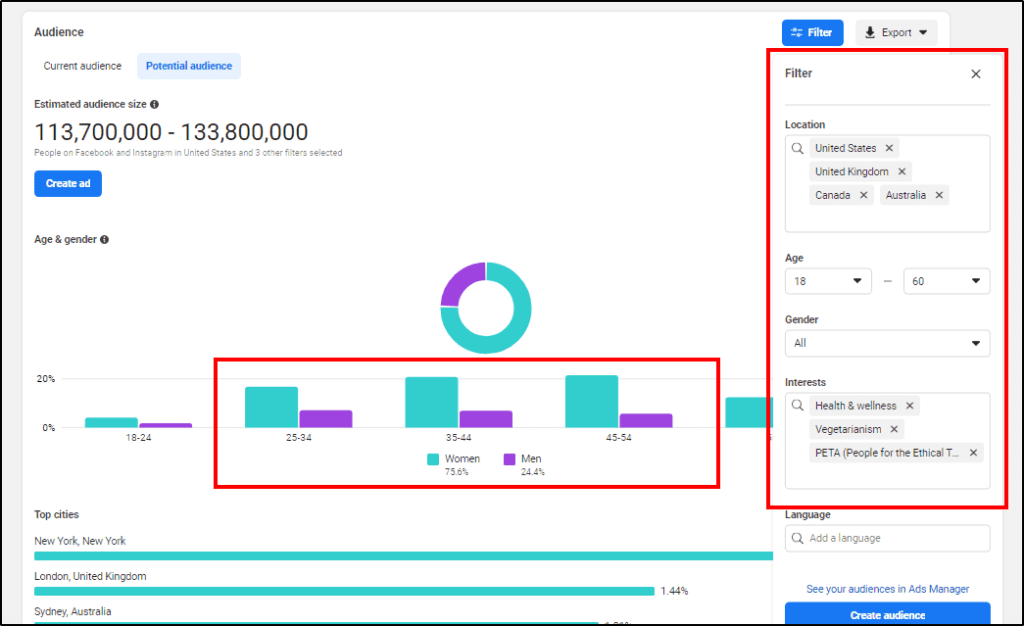

As you can see, the target audience is mainly females in the 25 to 54 age range. If you scroll down, you can get a country-wise breakdown of the audience along with the top brands they follow on Facebook.
Clearly, this information can help you understand your audience preferences and create a more refined target client profile.
At the end of your research, you should be able to state who your offering targets, what problem it solves, and why people will buy it.
Step 2: Plan Your Facebook Ads Funnel
So once you know who you’re targeting, it’s time to plan your high-converting Facebook ads funnel. A funnel helps you generate leads and add users to your email sequences where you can convince them to buy your product.
We’ll only plan the funnel at this stage and execute it later in the article.
A funnel plan or map shows you the different paths a visitor can follow after clicking your Facebook ad.
For example, this ad leads visitors to a landing page where can they sign up to receive a free report.
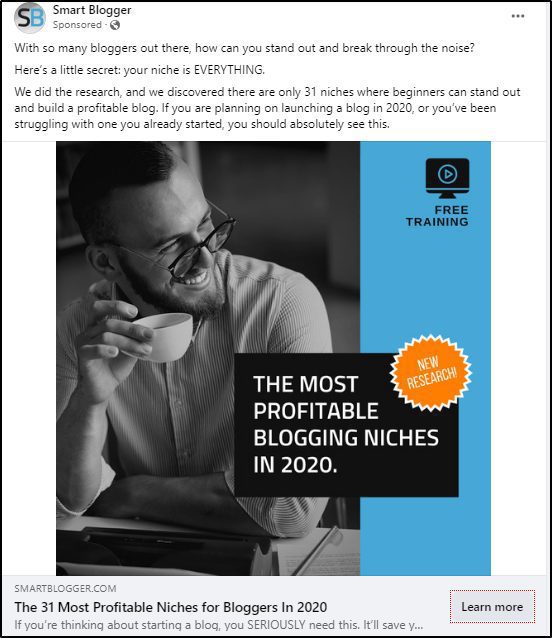

The ad leads to this landing page, which has a clear “call to action” (“Get It Now (Free)”) and also has Facebook Pixel installed. Facebook Pixel – in case you aren’t familiar with it – is basically small piece of code you install on your website that tells Facebook when a user lands on a specific page and tracks specific actions the user takes on the page.
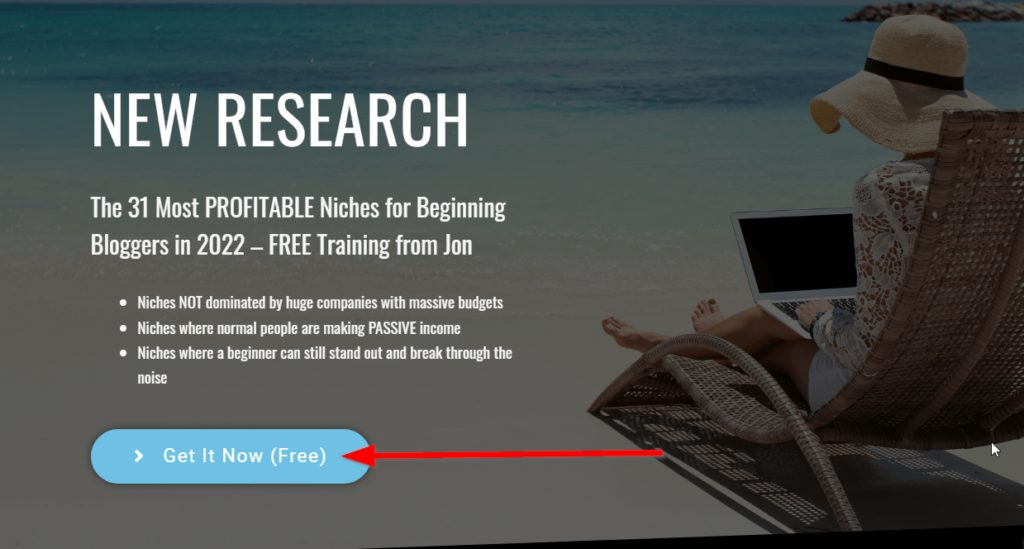

Now two things can happen here.
- The visitor downloads the report by signing up to the advertiser’s email list.
- The visitor leaves the page without signing up.
If visitors sign up, they start getting nurturing e-mails preparing them to buy the main course. If they don’t sign up for the free offer, the advertiser can “retarget” them – i.e., show them other, related ads the next time they are on Facebook – because the landing page contains the Facebook Pixel script.
Either way, it opens up more possibilities for the advertisers.
Here are a couple of other paths users might follow.
For example:
i. Facebook Ad→ Webinar sign-up page [Pixel installed] → Thank you + sales page for main product → User purchases the product.
ii. Facebook Ad→ Webinar sign up page [Pixel installed] → Thank you + sales page for main product → User does not purchase the product → Email sequence + Facebook retargeting ads triggered → Sales page → Sale closed
In short, there can be numerous other ways to structure a Facebook ads funnel.
Your job at this stage is to visualize all the possible routes your visitors can take after clicking on your ad so that you have an offer for every scenario.
Of course, to track and retarget your visitors, you’ll need to install Facebook Pixel to your website header, and all the pages in your sales funnel. Here’s the step-by-step process of using Facebook Pixel.
Step 3: Plan Your Facebook Ad Structure
Let’s now talk about the most important component of a Facebook Ads funnel – your Facebook ad unit.
Without creating an engaging and eye-catching Facebook ad that attracts your target audience and makes them click your landing page URL, you won’t be able to drive any leads or sales.
Facebook’s algorithms are designed around engagement. So, the more engagement an ad has, the faster Facebook will optimize it for the right audiences and bring you results.
Here’s what a basic FB ad unit looks like.
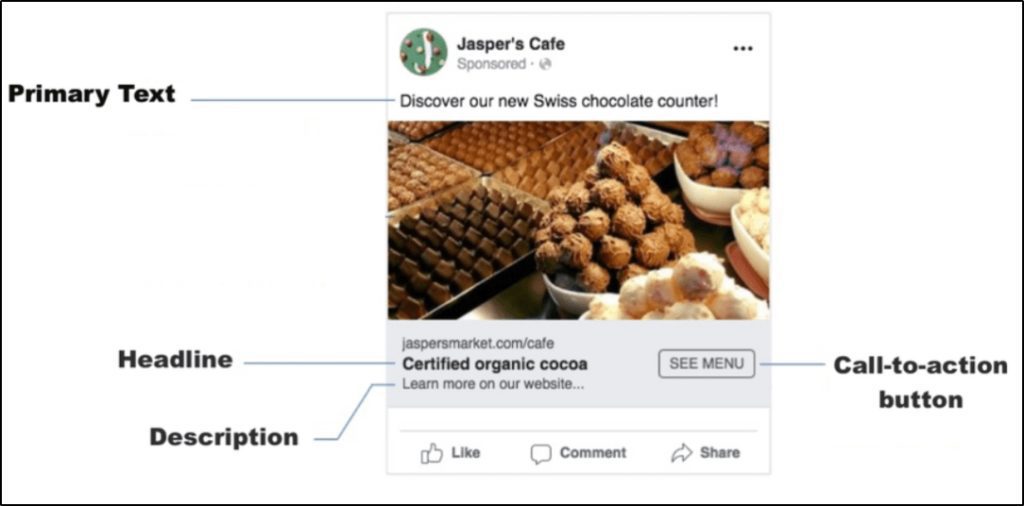

So, how do you create an optimized Facebook ad? Before sharing tips, let me tell you a secret.
Savvy marketers don’t reinvent the wheel. Instead, they simply learn from their competitors and replicate what’s working.
How do you do that? Facebook Ads Library is the answer.
As the name suggests, the Ads Library contains all the active and inactive FB ads created by advertisers worldwide.
You can easily search the ads your competitors are running by searching for your target keywords and filtering the results by media type, country, date, etc.
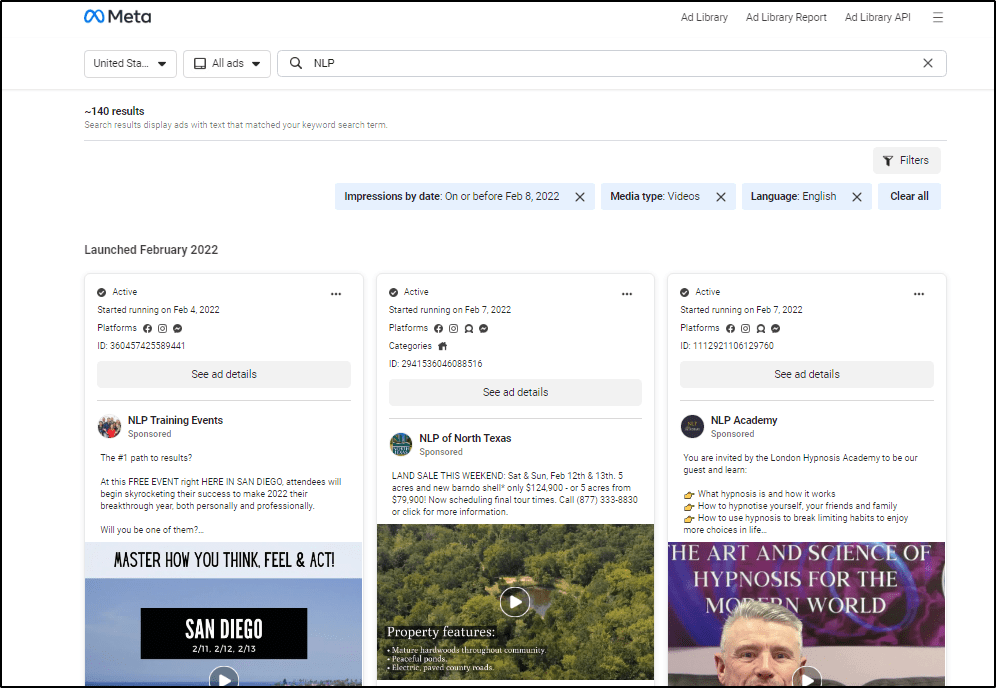

Find the best-performing ads and replicate their approach to get guaranteed results.
But to make the task easier for you, let me summarize the most critical steps of creating a successful Facebook Ad.
Ad Type
Facebook offers different ad types like post promotions, URL ads, image ads, video ads, etc.
In my experience, video ads are very effective for promoting online courses and coaching programs.
Research shows that 54% of consumers want to see more videos from brands they follow, even if it’s promotional content. Moreover, 88% of marketers are satisfied with the ROI of their video ads on social media.
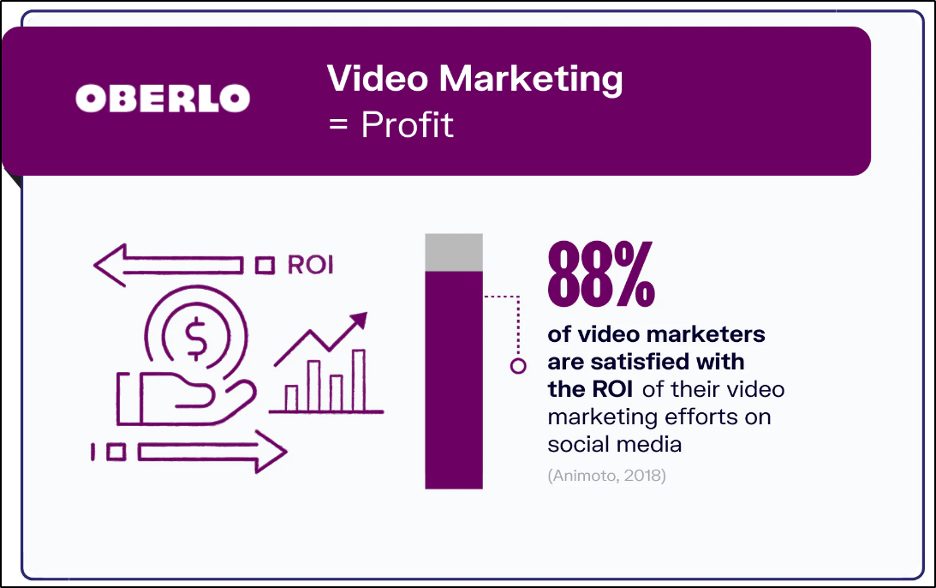

This is why most online course creators use short video ads on Facebook to drive traffic to their landing pages.
Here’s an excellent example of a video ad by Drop Ship Lifestyle, a hugely popular dropshipping course.
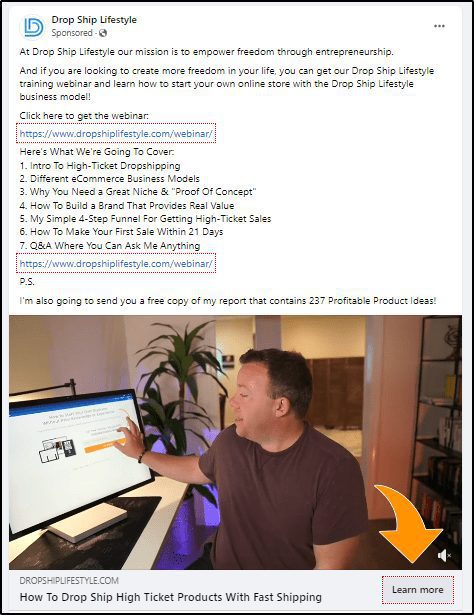

Video content is generally more engaging and easier to consume, which is why most Facebook users prefer engaging with them compared to other ad types.
Here are a few tips to make your videos more engaging and boost Facebook ads conversion.
- Add captions to your video because 92% of Facebook users watch videos with the sound off.
- Use 4:5 vertical videos for ads to provide a better watch experience since most users hold their phones vertically.
- Keep your videos ads under 15 sec in length for best performance and engagement. Facebook itself recommends this and, in a survey by Databox, most experts agreed that 15 second videos get the highest engagement. If truly needed, you can take up to 30 sec to communicate your message, but beyond that point, your engagement will tank unless you have an engaged, warmed-up audience.
- Feature your main brand message early in the video since you only have 15-30 seconds.
Ad Copy
Your ad’s text copy plays a crucial role in determining its success.
Don’t underestimate its importance just because you’ve created a good explainer video for your ad.
The ad copy needs to complement your video and break down its message in an easy-to-read format.
Here’s an excellent example of engaging Facebook ad copy I found while searching for the best performing ads in the Facebook Ads Library.
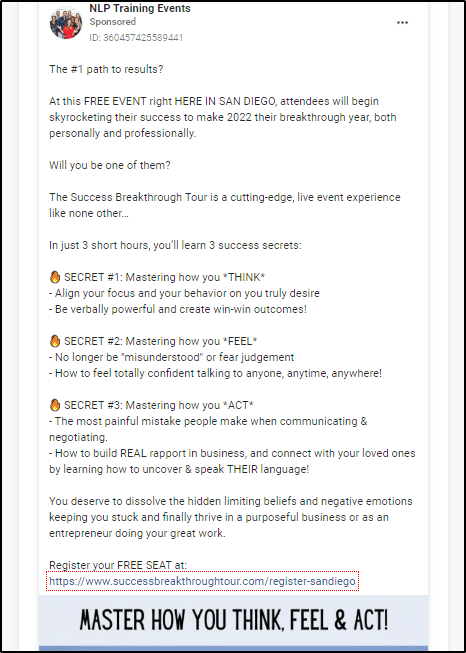

It’s a video ad, but the copy effectively complements its message in a scannable format using bullet points, emojis, and a clearly identifiable CTA (the event URL)
But you don’t always have to use long copy to get results.
For example, the video ad in the screenshot below uses a short paragraph with a CTA. But its message is engaging, relevant, and easy to scan. Plus, it uses urgency to drive CTA clicks.
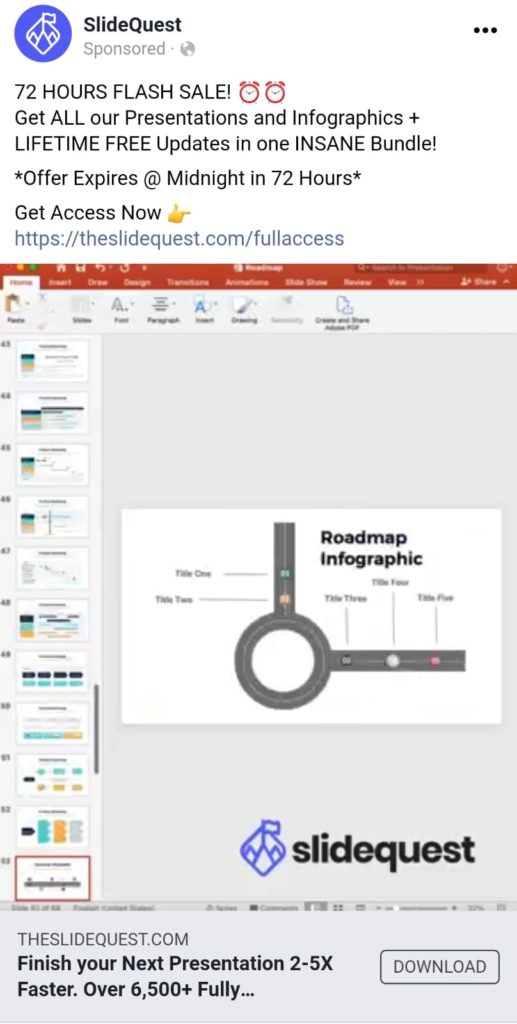

So, what are the Facebook Ad copy best practices? Let me briefly explain.
Use The Rule of One
The Rule of One in copywriting means your message should
- Speak to one reader
- Highlight one problem
- Offer one solution
- Promote one offer
Following this rule brings clarity to your copy and makes it more engaging for your readers.
Complement Your Ad Visuals
Your ad copy should tie in with your video’s message and generate more interest in your audience. Give them the crux of your video in the ad copy and persuade them to click on your CTA.
Use a Scannable Format
Make your copy easy to scan by using a headline and following it with bullet points. Use emojis with each bullet to make the copy more eye-catching and engaging.
Create Urgency
Always have a deadline for your offer to push users to take action.
Include a CTA
A Facebook video ad has a CTA, or “call to action,” button that says “Download”, “Learn More”, or something similar. However, always include the naked URL of your landing page in the ad copy with CTA text to increase conversions.
Starting Budget
Ideally, you should run 2-3 different ad units for a few days and compare the results to choose the best one.
You can begin a campaign with even $5 per day, but such a small budget won’t allow you to test or optimize your campaigns.
So, as I said before, have at least a $100 per day budget to test 2-3 different ad units for 4-5 days. This means you’ll be spending $30-$50 per day on one ad unit.
That’s still low, but it will allow you to compare the different units and find the winner. Once you choose the winner, discontinue the other ads and use your total budget to run the ad.
With time, Facebook’s algorithm will optimize your ad for the perfect audience, and your CPC rate will gradually go down.
Step 5: Use a Free Training as Lead Magnet
You need an offer to promote to run Facebook ads.
You can’t directly promote your main product because people don’t buy high ticket courses directly off a Facebook ad.
Instead, use free webinar training as your lead magnet.
Why webinars? Because they work.
Research shows that 53% of marketers consider webinars the best content type for lead generation.
This is why some of the most popular online courses generate leads using Facebook ads to live or recorded video training.
For example, here’s an ad to a popular TikTok ads course promoting free webinar training.
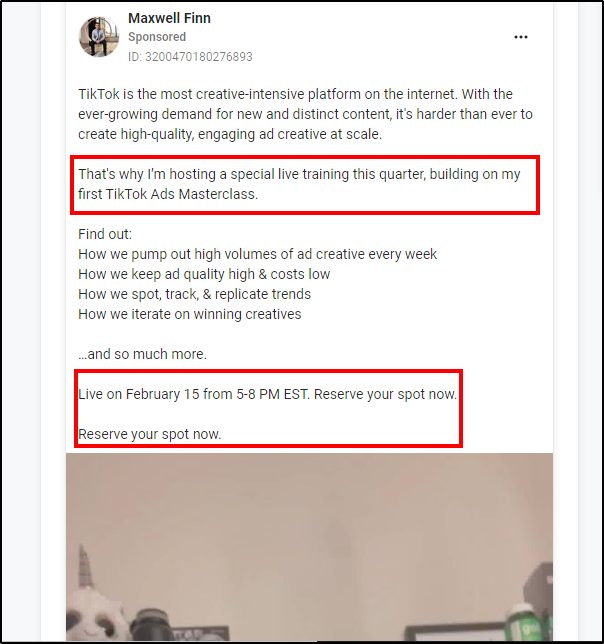

It routes users to the following webinar landing page.
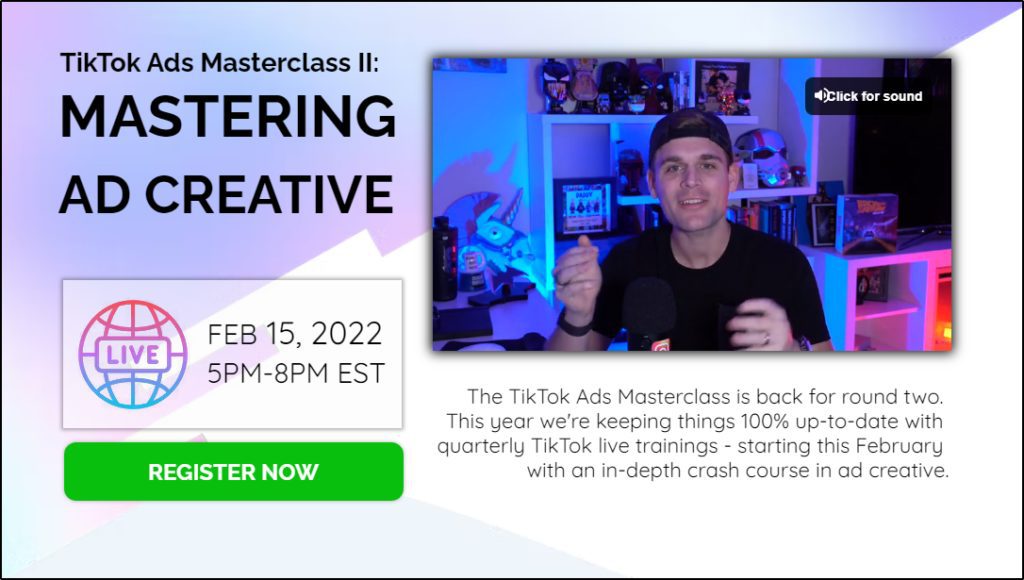

It’s crucial that your video ad’s message, copy, and landing page align with each other and stay on the same message theme. If there’s a drastic difference in them, you’ll see your conversions drop quickly.
The webinar landing page should offer a quick and easy way to sign up for your event using a clear CTA. Keep your main message and CTA at the top of the page, along with a short explainer video like in the screenshot above.
Your number one priority here is to get people on your email list, so don’t overburden your visitors with unnecessary information.
Once the visitors sign up, that’s where the lead nurturing, and the eventual sale will happen.
So thoroughly test your landing page and make sure it is fully optimized for conversions.
Once again, use the Facebook Ad Library to learn from the best-performing ads. Click an ad’s CTA button to visit its landing page and analyze how they’re driving conversions.
Step 6: Set Up a High-Converting Facebook Ads Thank You Page
Let me share a proven trick drive Facebook ads conversion – one that will enable you to convert a large portion of your audience even before watching your free webinar.
Offer them your product at a discounted rate immediately after they sign up.
Let me explain.
Once a visitor signs up to your webinar event, take them to a Thank You page.
But, unlike regular Thank You pages, this is effectively a sales page that promotes your main product with a special one-time discount offer if the visitors immediately.
Here’s how the flow works.


Digital Marketer uses this strategy to promote tripwire offers (low-priced products) to new email subscribers.
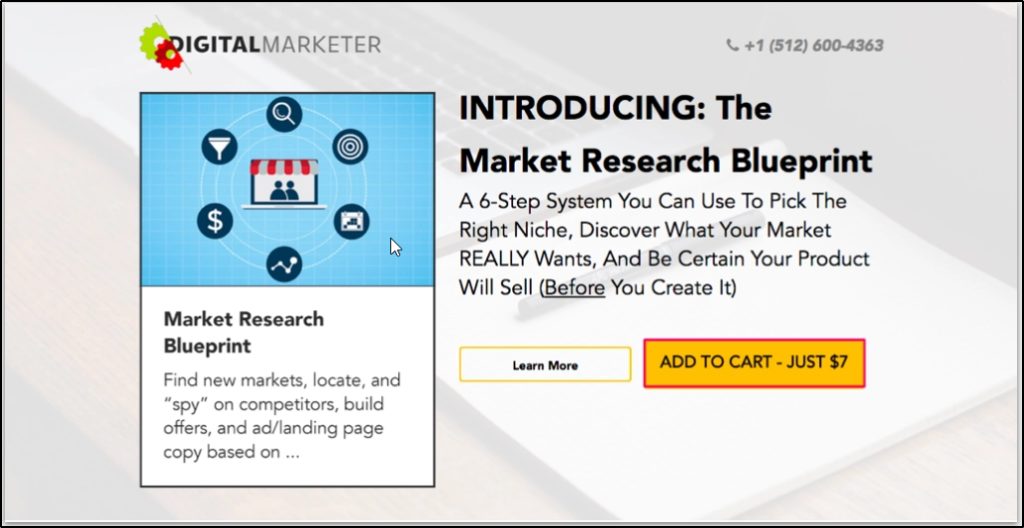

But it works equally well for promoting higher-priced products because the user has just shown interest in your offer by signing up for your free resource and is likely to take a discount offer on your main product as well.
Here’s another example Thank You page that uses this strategy successfully.
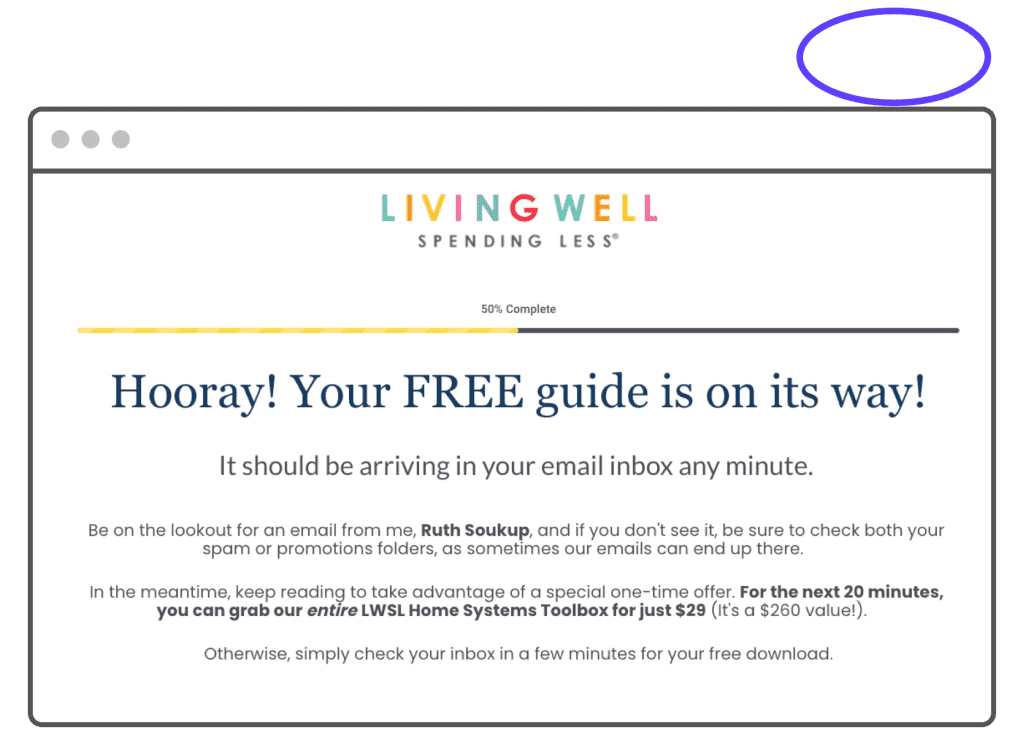

Like all other pages of your site and marketing funnel, the Thank You page also needs to have the Facebook Pixel installed so that you can retarget the non-buyers later.
Plus, even if your Than You page visitors don’t buy your discounted offer, you can still send them a nurturing email sequence since they’re already signed up to your list.
Step 7: Configure Your Retargeting Ads
What happens when someone visits your webinar landing page or thank you page but does not sign up? To really take your Facebook ads conversions to new levels, you run a Facebook retargeting campaign to get them back.
Retargeting allows you to show Facebook ads to warm audiences who’ve visited your website recently and already know you. They left without buying for some reason but are more likely to buy than a complete stranger if you remind them using Facebook ads.
Remember the TikTok webinar example I shared in step 5? I visited the landing page but didn’t sign up for the webinar.
So, what’s the first thing I saw when I logged in to my Facebook account? A retargeting ad by the same TikTok course creator.
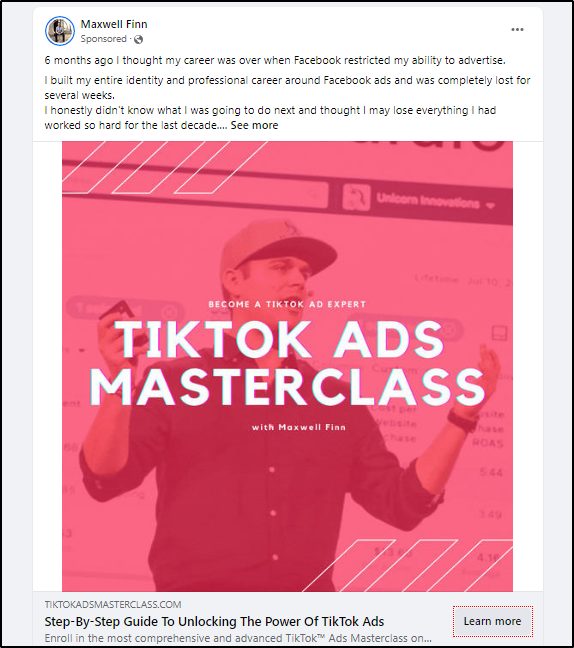

And he’s not alone.
Almost every course creator uses retargeting ads to get lost traffic back.
For example, if you go back to the start of this article, you’ll see I shared a Facebook ad by Amy Porterfield. I click the ad’s CTA as well to visit its landing page.
So, now my Facebook timeline has retargeting ads for Amy’s course.
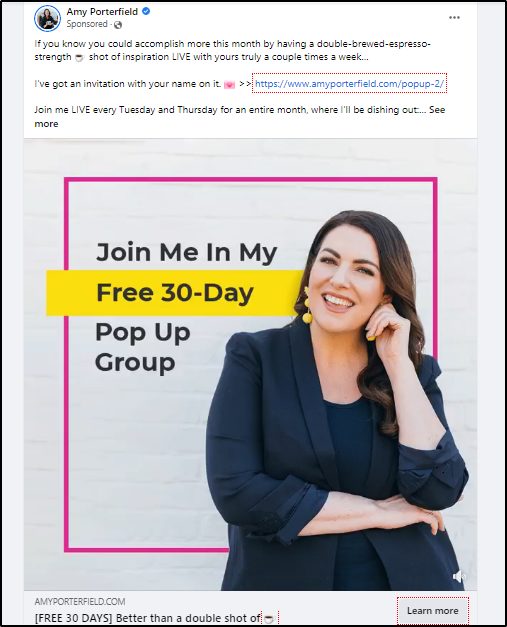

You don’t need to promote a different offer in your retargeting ads.
Promote the same free webinar you were offering before but use a different marketing angle and ad copy to create more urgency.
Ultimately, the goal is to get people to sign up for your lead magnet and get on your email list.
You can learn the step-by-step process of setting up and running retargeting ads in this Facebook guide.
Step 8: Trigger A Follow-Up Email Sequence for Unconverted Leads
Some of your audience will take your one-time discount offer and purchase the main course without even attending your webinar.
However, a large subscriber chunk needs more convincing.
How do you convert them? Two ways.
i. Pitch your main course at the end of your free webinar with another special offer for the attendees.
ii. Trigger an automated email sequence for the undecided leads.
This sequence aims to close the sale since you’ve already shared free value and awareness through your webinar.
Ideally, create a 5 to 7 day sequence in which you send the following emails.
– An offer to buy your product with a deadline.
– A case study/success story from your past buyers.
– Another sales email in which you highlight the benefits of your course and make a pitch.
– Another case study/success story.
– An inside view of your course with a free lesson.
– Last 24 hours call to action.
– Final call
– 1 hour left before close.
– Announce closure and add the leads to your regular weekly email list.
Most of your sales will come from this sequence, so make sure your email content is engaging, highlights the benefits of your audience, shows them how it will benefit them, and creates an urgency to drive sales.
If you’re unsure what to write in your emails, use DripScripts to access highly optimized sales email sequence templates for product launches.
Are You Ready Increase Your Facebook Ads Conversions?
Facebook Ads are an excellent traffic and lead generation tool for online course sellers, consultants, coaches, and other expertise-based businesses. However, they work better for selling high-ticket products with optimized funnels and extensive market budgets to test different ads.
The funnel I shared in this article is just one of the many ways you can drive course sales from Facebook advertising. To learn more, check out our post with more tips on how to market your course on Facebook.
If you have any questions about this strategy for Facebook ads conversion, please let me know in the comments section. I’d love to discuss.
See Also:
- How To Market Your Course With Facebook
- How to Create a Sales Funnel
- How to Sell Courses Online
- The Best Online Course Platforms to Create & Sell Courses
Table of Contents

